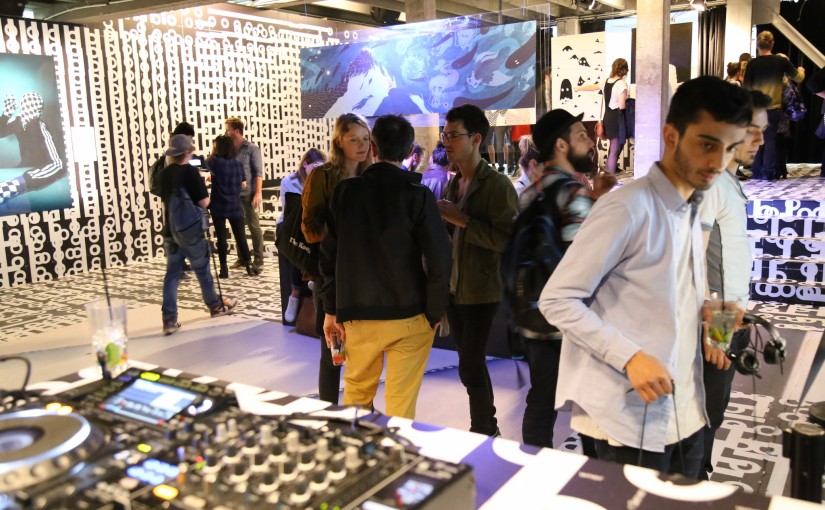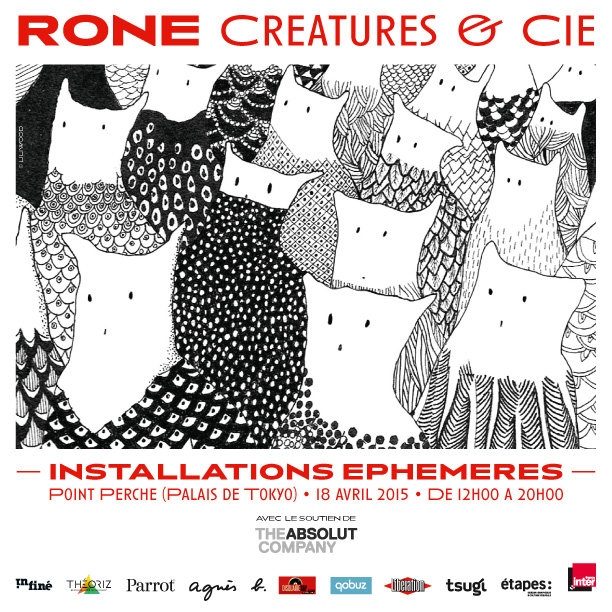For the Collective Sound Checks with the Studio 13/16 at the Centre Pompidou we have developed a series of web applications for mobile devices. The applications are based on web technologies such as HTML 5, JavaScript, Web Audio API, and Web Sockets.
The first set of applications we developed are a few gadgets that produce sound depending on the device’s motion. The gadgets can be played individually or with a group of player and allow for exploring different, techniques, sound materials, and metaphors. The drone, birds, monks and the rainstick are described below.
In addition to these gadgets we have experimented with collaborative scenarios that are described in separate posts:
The gadgets and We Will Rock You: Reloaded application have been published at http://cosima.ircam.fr/checks (the applications work on mobile devices and require at least iOS 6 or Android 4.2).
Drone
The drone reacts on the device rotation and responds with the amplitude and frequency modulation of a set of oscillators generating a bass drone. Strongly shaking the device generates an electric sound synthesized through granular synthesis.
Birds
Birds is a collection of bird sounds that are played by jiggling the device. Each player can try different bird calls. Two or more players can communicate through tweeting and create a forest-like atmosphere of distributed bird sounds answering to each other.
Monks
Monks features a short extract of the song “Early Morning Melody” from Meredith Monk’s Book of the Days and the recording of a Tibetan chant. Both extracts are performed through granular synthesis by tilting the device sidewards. A group of players can form a choir.
Rainstick
The rainstick is based on sound materials that have been created by Pierre Jodlowski and also used for the audio visual installation Grainstick produced at Ircam in 2010. The player has to hold your device horizontally and tilt it up and down like a rainstick to produce sound.

